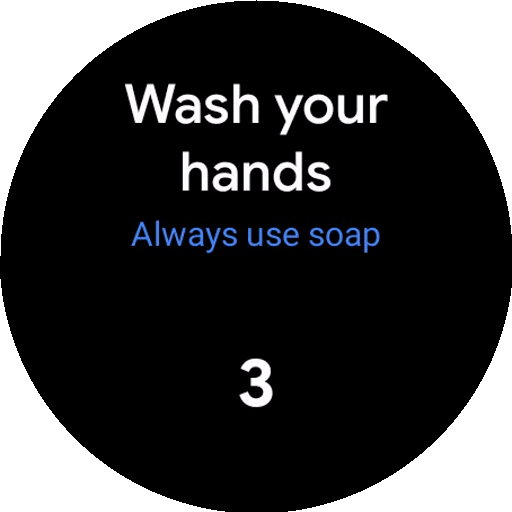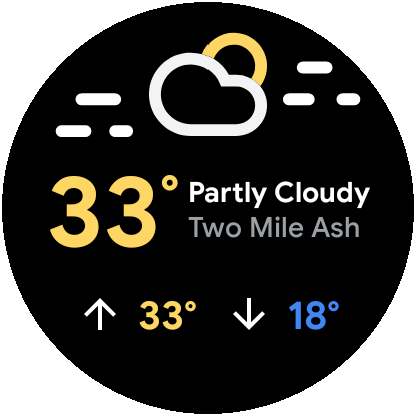Posted by Posted by The Android Developers Team
 Todoist is the world’s top task and time management app, empowering over 30 million people to organize, plan, and collaborate on projects big and small. As a company, Todoist is committed to creating more fulfilling ways for its users to work and live—which includes access to its app across all devices.
Todoist is the world’s top task and time management app, empowering over 30 million people to organize, plan, and collaborate on projects big and small. As a company, Todoist is committed to creating more fulfilling ways for its users to work and live—which includes access to its app across all devices.
That’s why Todoist developers adopted Compose for Wear OS to completely rebuild its app for wearables. This new UI toolkit gives developers the same easy-to-use suite that Android has made available for other devices, allowing for efficient, manageable app development.
A familiar toolkit optimized for Wear OS
Developers at Todoist already had experience with Jetpack Compose for Android mobile, which allowed them to quickly familiarize themselves with Compose for Wear OS. “When the new Wear design language and Compose for Wear OS were announced, we were thrilled,” said Rastislav Vaško, head of Android for Todoist. “It gave us new motivation and an opportunity to invest in the future of the platform.”
As with Jetpack Compose for mobile, developers can integrate customizable components directly from the Compose for Wear OS toolkit, allowing them to write code and implement design requirements much faster than with the View-based layouts they used previously. With the available documentation and hands-on guidance from the Compose for Wear OS codelab, they were able to translate their prior toolkit knowledge to the wearable platform.
“Compose for Wear OS had almost everything we needed to create our layouts,” said Rastislav. “Swipe-dismiss, TimeText, and ScalingLazyList were all components that worked very well out of the box for us, while still allowing us to make a recognizable and distinct app.” For features that were not yet available in the toolkit, the Todoist team used Google’s Horologist—a group of open-source libraries which provide Wear OS developers with features that are commonly required by developers but not yet available. From there, they used the Compose Layout Library to incorporate the fade away modifier that matched the native design guidelines.
Compose for Wear OS shifts development into overdrive
Compose for Wear OS simplifies UI development for Wear OS, letting engineers create complex screens that are both readable and maintainable because of its rich Kotlin syntax and modern declarative approach. This was a significant benefit for the production of the new Todoist application, enabling developers to achieve more in less time.
The central focus of the overhaul was to redesign all screens and interactions to conform with the latest Material Design for Wear OS. Using Compose for Wear OS, Todoist developers shifted away from WearableDrawerLayout in favor of a flatter app structure. This switch followed Material Design for Wear OS guidance and modernized the application’s layout.
Todoist developers designed each screen specifically for Wear OS devices, removing unnecessary elements that complicated the user experience.
“For wearables, we’re always thinking about what we can leave out, to keep only streamlined, focused, and quick interactions,” Rastislav said. Compose for Wear OS helped the Todoist team tremendously with both development and design, allowing them to introduce maintainable implementation while providing a consistent user experience.
"Since we rebuilt our app with Compose for Wear OS, Todoist’s growth rate of installations on Google Play increased by 50%."
"Since we rebuilt our app with Compose for Wear OS, Todoist’s growth rate of installations on Google Play increased by 50%."
An elevated user and developer experience
The developers at Todoist rapidly and efficiently created a refreshed application for Wear OS using Jetpack Compose. The modern tooling; intuitive APIs; and host of resources, documentation, and samples made for a smooth design and development process that required less code and accelerated the delivery of a new, functional user experience.
Since the app was revamped, the growth rate for Todoist installs on Google Play has increased 50%, and the team has received positive feedback from internal teams and on social media.
The team at Todoist is looking forward to discovering what else Compose for Wear OS can do for its application. They saw the refresh as an investment in the future of wearables and are excited for the additional opportunities and feature offerings provided by devices running Wear OS 3.
Transform your app with Compose for Wear OS
Todoist completely rebuilt and redesigned its Wear OS application with Compose for Wear OS, improving both the user and developer experience.
Learn more about Jetpack Compose for Wear OS:
- Wear OS talk from Google I/O to get a first look
- Compose for Wear OS codelab to start learning now
- Documentation for implementation guidance
- Horologist to supplement Wear OS development




